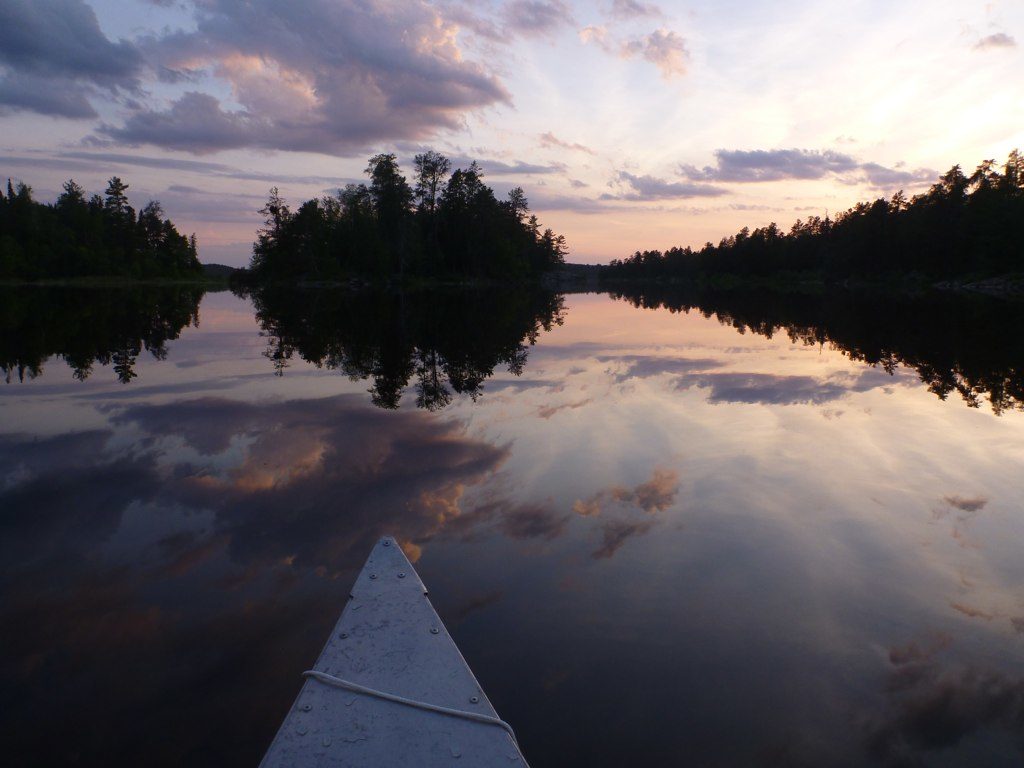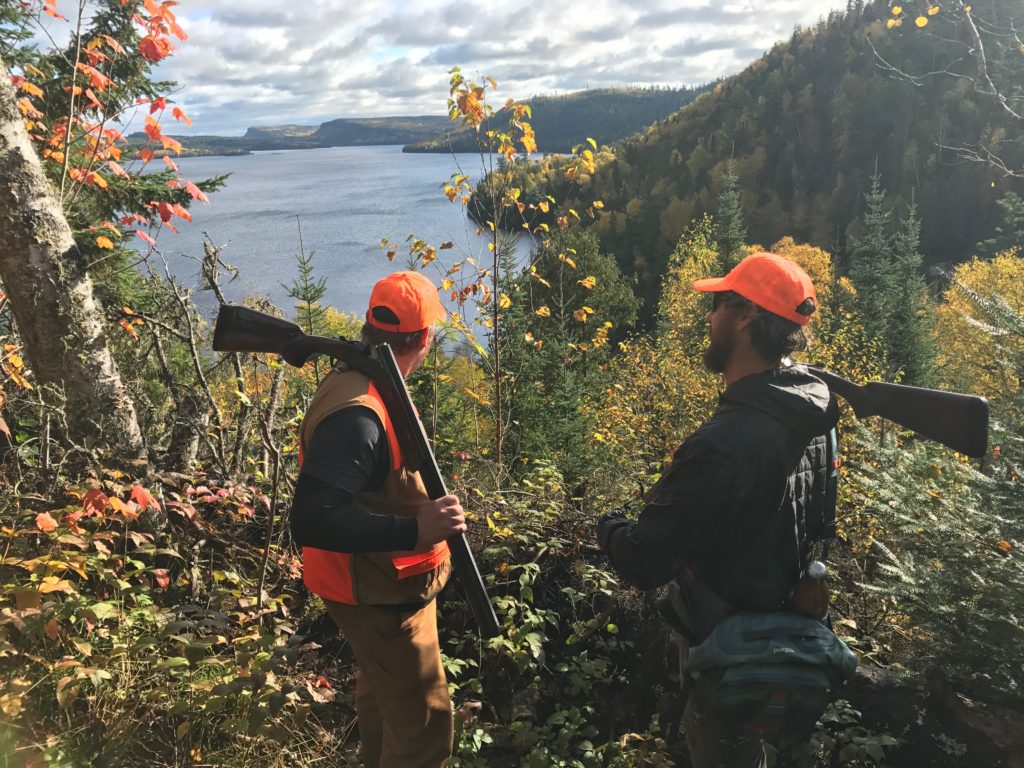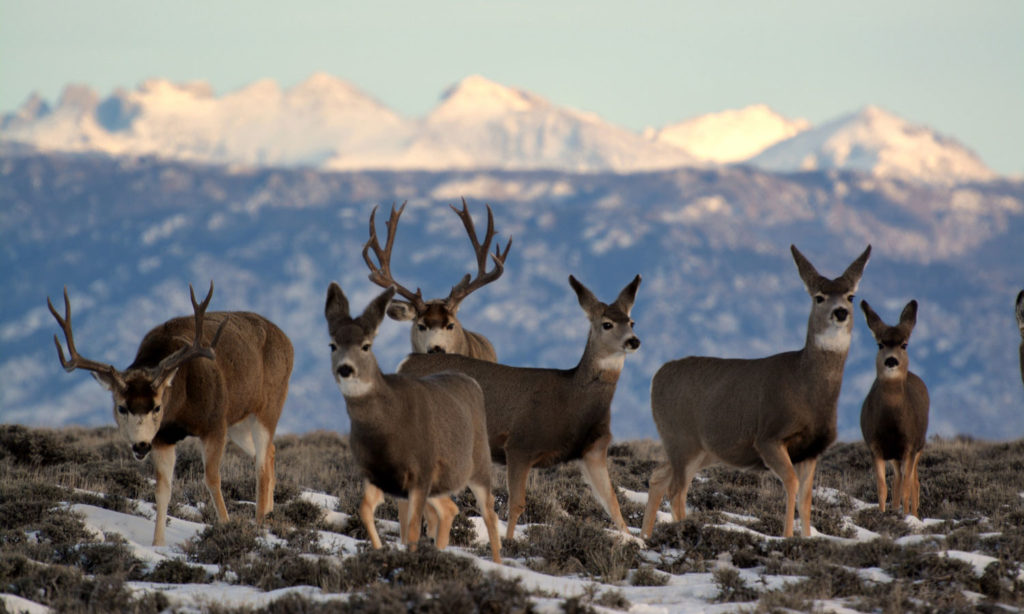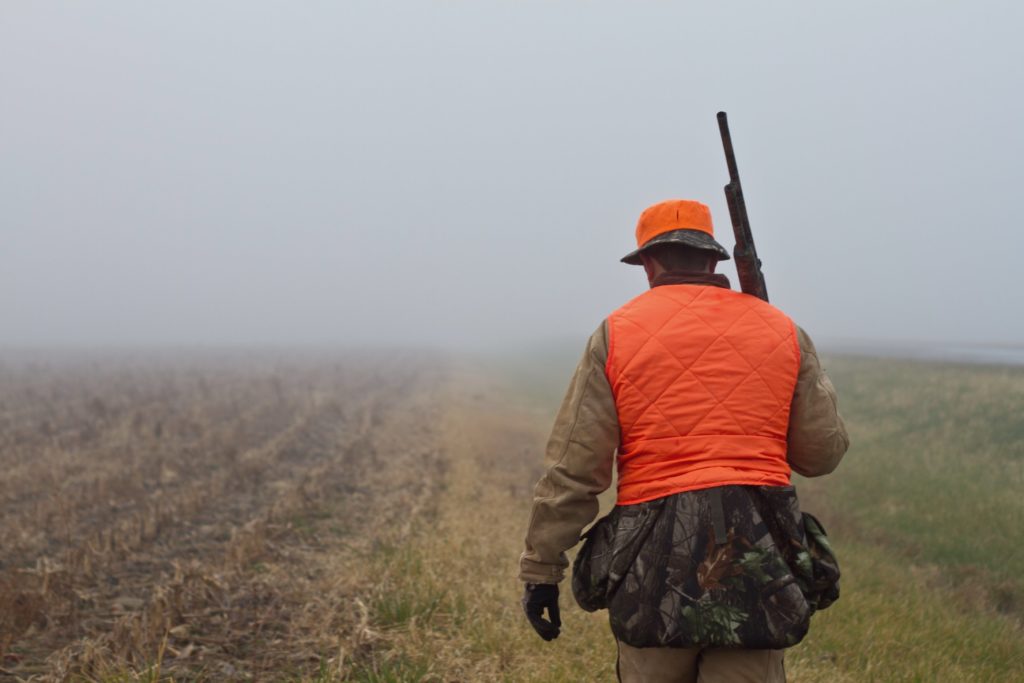Though Congress can choose to ignore the president’s recommendations, two documents released Monday indicate that major cuts to conservation could be part of offsetting new costs
If the president’s priorities for the federal budget or a critical infrastructure overhaul are any indication, sportsmen and women will need to speak out against major cuts and dramatic reprioritizations for the agencies that carry out conservation in America and the programs that ensure our ability to find quality places to hunt and fish.
Officially made public yesterday, President Trump’s fiscal year 2019 budget request included $3.7 billion in cuts at the U.S. Department of Agriculture, $1.7 billion in cuts at Interior, and a 23-percent reduction at the Environmental Protection Agency. Many line item reductions seem to be at odds with the administration’s priorities, like enhancing hunting and fishing access. It also suggests slashing multiple programs that help support state efforts to conserve fish and wildlife or match federal grants for projects.
“As it is, federal funding for conservation represents barely one percent of the budget, having been slashed in half over the past 30 years, and it would be impossible to balance the budget on the back of conservation,” says Whit Fosburgh, president and CEO of the Theodore Roosevelt Conservation Partnership. “Unfortunately, this proposal seems to indicate that cash-strapped conservation agencies deserve these cuts, while public land facilities, forests, waterways, wetlands, and millions of acres of sagebrush continue to fall by the wayside. The $887-billion outdoor recreation economy relies on healthy fish and wildlife populations, quality habitat, and the upkeep of public land infrastructure, and we will continue working with Congress and the administration to ensure these basic tenets of conservation are upheld.”
It is important to note that the president’s budget is only a set of recommendations, and Congress did not follow through on cuts suggested in last year’s proposal. Here’s how the president’s budget would impact fish, wildlife, sportsmen’s access, and the outdoor recreation economy.
U.S. Forest Service
The budget fails to address the fiscally catastrophic effects of ‘fire borrowing’ and the ever-climbing cost of fire suppression. The Forest Service estimates that by 2021, wildland fire costs will consume 67 percent of the Forest Service budget, which would be cut by 9 percent overall per the president’s proposal.
Two Forest Service programs were zeroed out entirely: The Forest Legacy Program, which supports state efforts to conserve environmentally sensitive forest lands, and the Legacy Roads and Trails Program, which supports urgently needed road and trail repair and maintenance, road decommissioning, and removal of barriers to fish passage.
One bad idea that could catch on is tapping into the Land and Water Conservation Fund for routine maintenance of public lands. Particularly, a 98-percent reduction in land acquisition funds at the Forest Service would hamper the administration’s ability to open and expand access to public lands. Further, if inholdings are more susceptible to development, this would also increase public access challenges and the costs of public lands management.
Bureau of Land Management
The BLM is charged with managing 240 million acres—more than any other federal agency—and yet its FY18 budget of $1.3 billion was just 43 percent of the National Park Service’s budget of $2.9 billion. For FY19, the agency is slated for an additional 17.5-percent cut, which would only make it more difficult for the BLM to do its job. We also noticed a 14-percent reduction for management of lands and resources, including 32 percent less funding for “management of rangeland and forest resources; riparian areas; soil, water, and air activities; wild horses and burros; and cultural resources.”
“Further cuts to the BLM’s budget would only lead to increased public frustration with the agency—it will inevitably be seen as the BLM’s inability to do its job as expected by the American people,” says Joel Webster, TRCP’s director of Western lands. “This is what led to the need for sportsmen and women to fight for public ownership of public lands in the first place.”
U.S. Fish and Wildlife Service
The agency that manages national wildlife refuges, protects endangered species, manages migratory birds (including waterfowl), and enforces federal wildlife laws would see an 18-percent overall budget cut. State and Tribal Wildlife Grants would be slashed in half, and Competitive State and Tribal Grants would be eliminated completely.
The State and Tribal Wildlife Grants program gives money directly to state fish and wildlife agencies to fund conservation projects targeted at species of greatest conservation need, but also to improve habitat for countless species important to hunters and anglers. Dramatically cutting funds for projects that help keep species from becoming threatened and endangered ensures higher conservation costs for reduced habitat gains in the future.
In addition, a $7.6-million reduction for the National Wildlife Refuge System would zero out accounts for conservation planning activities, leaving the refuge system flat-footed and unable to address tomorrow’s resource challenges.
There was also a suggested 11-percent cut to North American Wetlands Conservation Act funds, which go toward wetland restoration projects around the nation with every federal dollar matched as many as three times over by non-federal dollars. Deep cuts to matching grant programs like NAWCA have an outsized negative impact to on-the-ground conservation projects.
Water Quality Programs
Beyond a 16-percent cut to USDA’s overall budget, the president’s budget proposes an elimination of the Conservation Stewardship Program and Regional Conservation Partnership Program—both of which help to improve water quality and soil health on private lands. Both programs enjoy tremendous bipartisan support and demand from landowners, and their loss would be felt from the Mississippi River Basin to the Delaware River Watershed.
Trump’s proposal also included a 76-percent cut to WaterSMART, the Bureau of Reclamation’s premier program for conserving and recycling water in the West in ways that also benefit fish and wildlife habitat. Additional cuts, such as the proposed elimination of the EPA program funding local watershed-level clean water projects, or a 90-percent reduction in the Chesapeake Bay Program, further jeopardize clean water and quality fish habitat at the local, state, and regional levels.
Infrastructure
Meanwhile, the president’s infrastructure plan—also released on Monday—contains some strong provisions for the systems that ensure we have clean water, including $20 million for the Water Infrastructure Finance and Innovation Program, which leverages federal investment with private and non-federal dollars to build new clean water infrastructure.
Possible cuts to agency budgets and programs that help facilitate access to outdoor recreation experiences on public land seem to be at odds with an appetite for investing in the infrastructure of our national parks and drastically reducing the maintenance backlog on public lands. It remains to be seen where the $200 billion needed for the president’s infrastructure plan will be cut elsewhere in the budget, but one line in the plan suggests that public lands could be sold to offset costs.
There is ongoing concern that a forthcoming bill might include provisions to limit public input and environmental review on infrastructure projects, as well.
“Make no mistake, we are paying attention to the clear shift away from budgeting for public land acquisition and questioning whether the infrastructure plan is really implying that we should sell off public lands to make improvements to roads, bridges, and airports,” says Fosburgh. “An infrastructure bill should present a major opportunity to enhance natural solutions for modern infrastructure challenges. Restoring wetlands and creating wildlife-friendly roadway passages, for example, not only boosts fish and wildlife habitat, it also helps mitigate flooding that threatens American communities during more and more frequent catastrophic storms. These natural solutions are often more cost-effective and worthy of American taxpayer dollars than gray infrastructure, which only begins to deteriorate after day one.”
The TRCP will continue working to amplify the voices of sportsmen and women, who want decision makers to stop chipping away at conservation policies that have made America’s natural resources the envy of the world.









This is disgraceful but not surprising unfortunately. This president has no interest in anything that he or his family cannot profit from. The continual attack on our nation’s wild places and out environment over all are truly tragic. Trump, Zinke and Pruitt are out to destroy what should be left clean and wild for the generations that come after us, 2020 can’t get here fast enough.
THEODORE ROOSEVELT IS SPINNING IN HIS GRAVE, AND WE HAVE THE ANTIQUATED ELECTORAL COLLEGE TO THANK FOR IT. THE POPULAR VOTE FAVORED HILLARY.
If we want public lands we have to have budgetary sanity. Please remember that it was the previous administration that spent us into a situation where we are now in obscene amounts of debt. The kind of spending that we have had in the past decade and the kind of spending Clinton would have continued would have insured a significantly more dire situation in the future. It is horrifically sad and I do hope the money can be taken from some other insane program the feds were blowing money on under the Obama administration. The answer is not running roughshod over much of the country and just running it from the coasts. Those areas don’t exactly produce politicians that are friendly to hunters. If you want public lands, you need to be fiscally conservative. Let’s hope we can recover from liberal fiscal police and avoid having our lands “repoed”.
You premise about the previous admuinistration is simply not true, as it has no bais in fact. Regardless of your making points up without basis, the current administrations intent to cut pprograms that support a healthy environment and to sell public land to pay for tax cuts for the 1% is reprehensiblel.
These “Bury Head In Sand” Cons are so Brainwashed and suffer from Dissonance to such a degree that Free Thought has become extinct!
If we had the German system of conservation of game, water, etc we wouldn’t need all this excessive bureaucracy because with ownership of land and water rights comes the responsibilities of managing it properly. Also, please take a civics class or read the Constitution because the POTUS is not elected by popular vote. Also, voting for the POTUS is a privilege granted to you by your state, not a right. Also, we should repeal the 17th Amendment and return the representation of state governments in the Senate to the states. The 17th Amendment has done nothing but damage to the checks and balances provided originally in the US Constitution.
That said, under the Democrats the government might hold land but they aren’t likely wanting you to use it. Especially not for hunting and fishing. At least Trump has sons who hunt and fish and with their Czech background should have some understanding of Waidgerechtigkeit. Most Americans, not so much, they are “sportsmen.”
Pam, couldn’t have said it better. It’s obvious that this “President” and his ilk are out to exploit our national resources and treasures for their own gain, and could care less about our nations hunters, anglers, and anyone who enjoys our beautiful national resources – let alone our future generations…
its hard enough to mange the resources of this country with funding at present level’s so lets cut the budget and not care for the open lands in America business will pick up the slack….. want to buy a bridge
Couldn’t agree more with Pam’s comments. It is a sobering thought thinking about where all this headed.
We need to stop the republicans from destroying our public lands now.
I’m a pro public land Republican and I hear you. I really don’t think that the future of public lands can possibly be a good though if we continue to spend ourselves into oblivion like the previous administration. If you want to have public lands you need to be fiscally conservative. With the debt that both so-called Republican and Democratic presidents have put us in, especially under Obama, we may not be able to keep public lands strong. The money has to come from somewhere. The answer is to vote for candidates who are pro-land and fiscally conservative. That’s hard to find on one side and impossible on the other. JFK may have been a good example. Or course by today’s standards he would be a Republican
Billionaires have their own private “parks”. These cuts are screwing the rest of out of heritage and outdoor enjoyment.
Where is the petition? Where are letter templates to send to our representatives? Someone surly has created them …. who knows how to contact them? Once found, are you the circulating resource? Thank you
Hi Ray, thanks for your comment! At this time, we don’t have any petitions because this is just a suggested budget from the President for Congress. But, let us know if you would still like to take action on this and we will happily guide you somewhere where you can.
Maybe……..Trump and his MOB, can pretend they “heard” nothing from Hunters and Anglers but I sincerely doubt it! Liars gonna lie……..
“Mob” huh? You might look in the mirror. How about some civility?
I’m not surprised — I think he is only interested in the environment in so far as he and his friends can profit from destroying it. In further news, check out how Zinke wants to destroy the Migratory Bird Treaty Act — http://www.latimes.com/opinion/op-ed/la-oe-leslie-migratory-bird-act-trump-administration-20180214-story.html, the Border wall is an ecological disaster http://www.audubon.org/features/esri-embattled-borderlands and i would suspect that any infrastructure built will completely ignore any laws like the clean-air act, etc, much as the=y have been suspended for the border wall constriction — The Department of Homeland Security has, bizarrely, used Section 102 of the 2005 Real ID Act to waive construction on 15 miles along the San Diego border from complying with any part of 37 federal laws, including the National Environmental Policy Act, the Endangered Species Act, the Clean Water Act, the Safe Drinking Water Act, and the Solid Waste Disposal Act. Please urge your members of congress to hold the line against this devastation.
we must keep public land as public lands–meaning forest service and BLM and parks. we must not ever consider turning federal lands to the states and especially to private owners. then we must do all we can to manage these lands and make them accessible to the people. Management must include taking care of all wildlife.
This article states, “Many line item reductions seem to be at odds with the administration’s priorities, like enhancing hunting and fishing access. ” Yet by now we all should recognize that the Trump administration is not in support of ANYTHING that benefits people, wild spaces, or planet. Whatever its rhetoric, its actions — and its proposed budget — speak a lot louder than words and show its true priorities which are to make the extremely rich extremely richer and everyone else be damned.
This plan is unreal. It is like or allowing the corporation to take over this country. Trump has surely forgotten and ignored the part “We the people.” I am totally against the plan. The plan secretly calls for the privatization of this country’s infrastructure. It does not mean more jobs. It means less jobs. Coropations and investors believe in doing more with less for bigger profits this means less jobs and higher prices. The plan would literally destroy our wildlife infrastructure.
It’s not a Country anymore, it’s a Business.
Continue to vote for representatives who don’t value the environment/mostly republicans and this is what happens..if you believe otherwise your part of the problem. This president was supposed to be the one who would restore power to the outdoorsman/woman..you’ve been punked
I am disappointed in President Trump and His administration on this issue. I have been a big supported of his policies and successes so far, but what I am seeing what might happen on conservation legislation is disturbing. There needs to be a full-fledged communication by sports man to the Trump Administration and Republicans on Conservation. I dont want “nut-case” so called environmentalists involved as they will dilute our cause.
I have been a hunter and conservationist for more than 50 years and i always find it very humorous when the left wing tree huggers are backed into a corner and need support from the hunting and fishing sector while they, the left wing, are out protesting, immigrants, the wall, Confederate statues or some obscure beetle in some obscure desert,
or demanding more welfare for lazy no goods who sit on the ass all day and strip the American coffers of our money and now the funds supporting the very mountains, lakes and open spaces we so much love and enjoy.
When do we cut out the free loaders, those not of this country who leave our deserts littered with plastic and water jugs or those who strip the oceans of our marine life and leave miles of netting and fishing line adrift to entangle even more fish and ducks.
I’ve studied Theodore Roosevelt since my first readings, I have a guest room dedicated to the man and my family spent a week at the T.R National Park in September and I’m confident he would support what President Trump is proposing, if for no other reason but to force people to open their eyes and see the waste.
Saying that the president only supports what makes him money, is just plain “stupid”. Why the hell does he need more money, he doesn’t even take a salary!
How many of you have ever supported or contributed to any of the wildlife organizations that actually put money in the ground? My guess is none of you, so stop bitching and get that left wing machine working on the diverting of wasted money and putting it back into our natural spaces. OH EXCUSE ME, birds and bears and bats can’t vote but illegals who become citizens can…..thus the left wing way.
What a sad time for our environment..Trump and his gang only care about fleecing their bank accounts and exploiting our natural resources. The only way to stop this assault is by recruiting more activists and spreading the word to the masses. I know that many people don’t realize what is happening and if they did they’d help stop this assault on our environment. Spread the word and explain the consequences to your friends.
Trump’s proposed budget for conservation and protecting public land is disgraceful. It is a total snub to past Americans who loved the land, in addition to disregarding the work and wishes of those Americans who felt it was important to preserve these lands for their children and their children’s children.
All Trump wants to see is a way for someone to make money off public lands whether it be charging for entrance (resulting in restricting access to America’s remaining natural beauty to those who can pay for it). But I suspect there is a more insidious reason for this action … it paves a way for corporations to take natural resources away from the American people. We need to remember that these are public lands held in trust by the federal government … the federal government is not America, thereby it does not own these lands!
Most of these deep budget cut proposals are designed to make management agencies look bad to the general public, thus setting the stage for corporate takeover of management and/or sale of public lands.
We are already seeing their actions to turn over public campgrounds to private entities, and we will see parallel actions continue to take over public resources. The growing national debt will only add to the chorus of selling public lands to pay down debt. If you use or care about public lands and resources, pay attention to who you vote for in mid term elections as a start.
Dittos to what Greg Munther says — privatization of our national treasures (public land) is a real threat….and be mindful of this as we enter into the mid term elections!
We deserve so much better leadership. We, our children, our grandchildren, and our magnificent country and natural resources are being ill served. We are headed for an epic disaster of loss of our natural resources if this continues. Who we elect matters. (I for one belong to and contribute to multiple wildlife and outdoor organizations.)
The righties are just doing what righties have always done. Taking something that doesn’t belong to them, like common thieves. The regressive party has been poised for this moment for a long time. They take. They take until nothing worthwhile remains, looting the lands of our national heritage, and leaving behind a toxic landscape, ravaged and scarred. Their sense of entitlement is astonishing.
Do you believe they will ever be held accountable for the mess they leave behind?
Failed leadership and acquiescent lawmakers have opened the door for this plunder. It’s the most un-American activity I have witnessed in a long time. True sportsmen who value the land they walk on would never think to defile it in this manor. Satan is laughing.
We all have a stake in this matter. Before we have to use conservation to heal the damage, Let’s prevent it.
Use your voices, your calls, your letters, your contributions, and most of all your feet, straight to the voting booth.
There will never be enough money to satisfy the Military-Industrial giant that continues to grow through both Republican and Democratic administrations. The funding for Military spending has become so important to the economic stability in thousands of cities, that it required to sustain the area’s very existence. We have created a MONSTER, that seems to have an insatisfiable appetite.